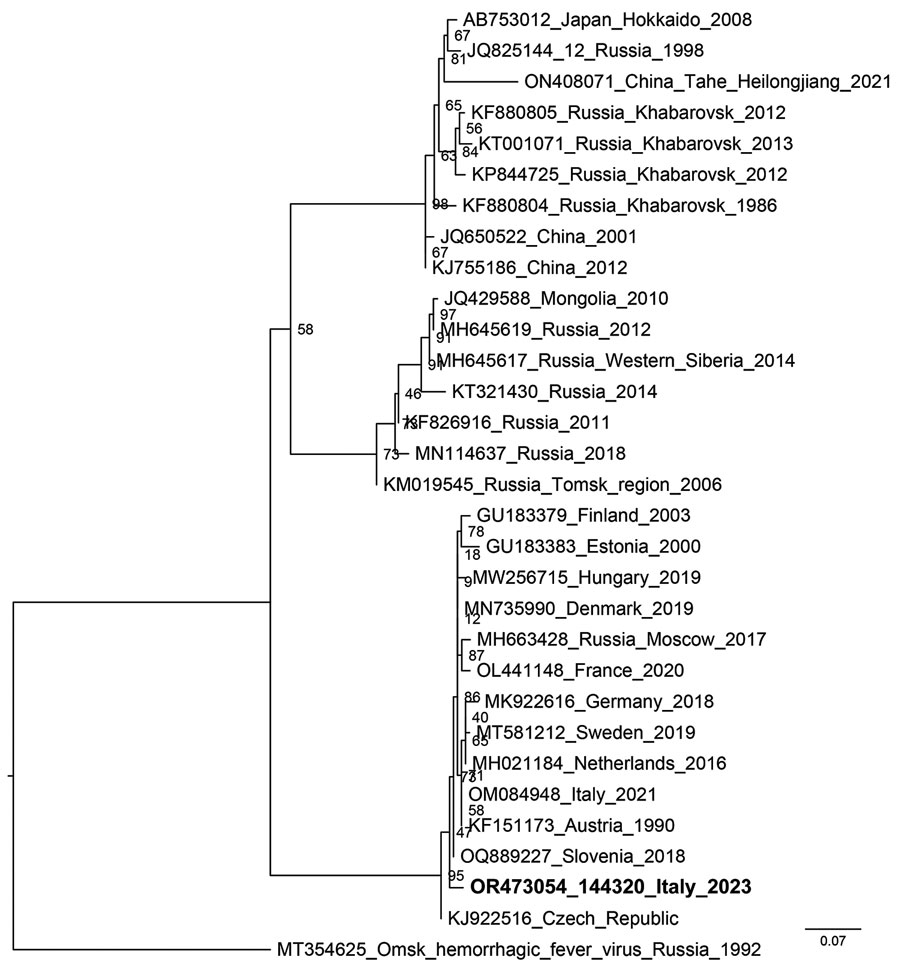Volume 30, Number 2—February 2024
Dispatch
Tick-Borne Encephalitis, Lombardy, Italy
Figure 3

Figure 3. Phylogenetic tree of a representative tick-borne encephalitis virus (boldface) from samples collected from a wild chamois and ticks in the Lombardy region of Italy. Tree shows the relationship between the obtained sequence of a 224-bp portion of the nonstructural 5 gene and reference sequences from GenBank (accession numbers, country, and year of isolation provided). The phylogenetic analysis was performed on the homologous sequences by the maximum-likelihood method using IQ-TREE software (http://www.iqtree.org), after alignment.
Page created: December 31, 2023
Page updated: January 24, 2024
Page reviewed: January 24, 2024
The conclusions, findings, and opinions expressed by authors contributing to this journal do not necessarily reflect the official position of the U.S. Department of Health and Human Services, the Public Health Service, the Centers for Disease Control and Prevention, or the authors' affiliated institutions. Use of trade names is for identification only and does not imply endorsement by any of the groups named above.